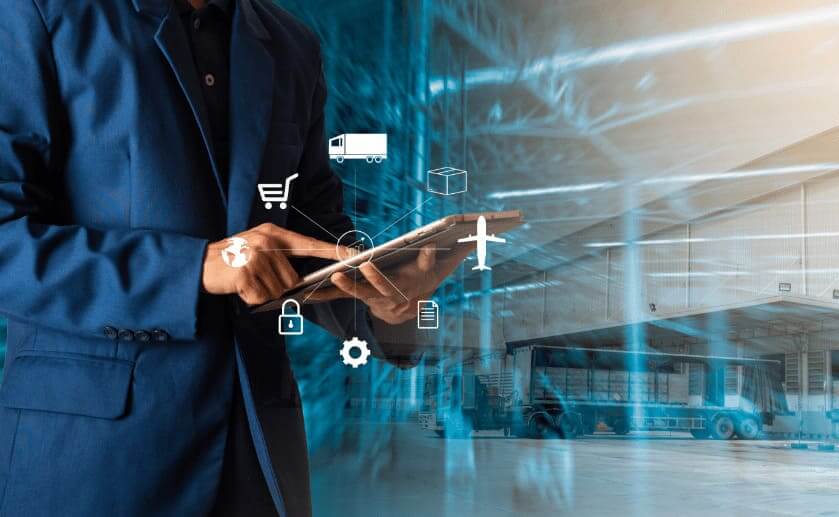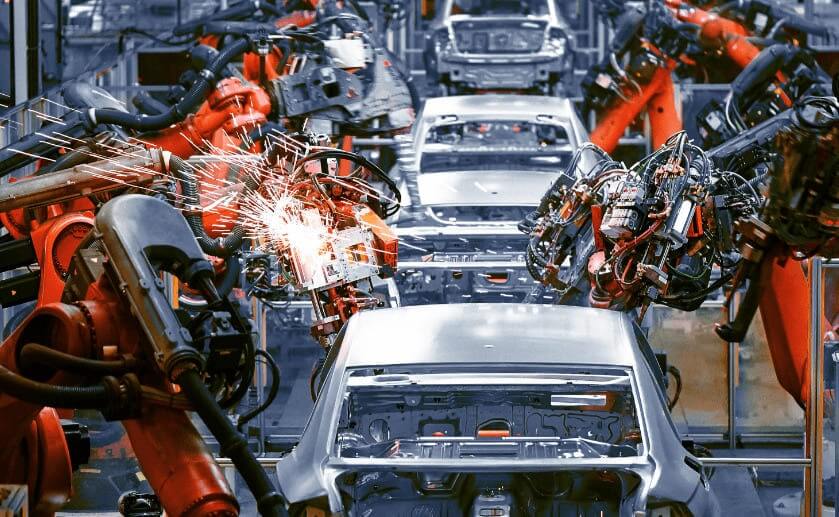Tactics for CPOs to Optimize Margins Throughout the Supply Chain

Tactics for CPOs to Optimize Margins Throughout the Supply Chain
CPOs face unique challenges in today’s complex, fast-changing world. Targeting for ideal supply chain management solutions demands greater expertise. As per the Hackett Group, procurement workloads will climb 10.6% in 2023, while productivity will drop due to talent shortages. This situation highlights the need for CPOs to employ strategic, innovative approaches. They must navigate complexity, optimize margins, drive efficiency, and meet global market demands, all amid limited resources. This article explores strategies to empower CPOs to overcome these hurdles, cultivate supplier relationships, and lead with agility despite fierce competition.
Strategic Sourcing: A Key to Cost Management
A Deloitte survey found that 76% of CPOs prioritize cost reduction. Strategic sourcing, therefore, is imperative for CPOs to improve supply chain efficiency. It involves market analysis, supplier selection, and risk management for cost savings. CPOs can also leverage e-sourcing tools for cost comparisons and go for process automation to reduce operational costs further.
Demand Forecasting: Enhancing Procurement Efficiency
Demand forecasting allows CPOs to predict future needs accurately and manage resources effectively. Gartner’s findings highlight that retailers focusing on demand forecasting achieved a 32% reduction in out-of-stock items and a 20% improvement in inventory level optimization. Efficient demand forecasting can significantly reduce these losses, making it an indispensable tool for CPOs.
Negotiating Tactics for CPOs
CPOs use effective negotiation tactics to manage procurement costs while maintaining supplier relationships. Here are some tips:
- Use data and facts to strengthen arguments and counterpoints. According to IBM reports, consumers increasingly favour businesses with quantified, data-supported results.
- Gain insights into supplier’s priorities and supply chain MRO to leverage during negotiations.
- Be prepared to walk away if the deal doesn’t meet your minimum requirements. This shows you’re not desperate and can bring the supplier to your terms.
- Go for a personalized approach, as 90% of consumers find it highly appealing to companies offering such experiences.
Leveraging Technology for Cost Savings
Adopting technology in procurement is rapidly becoming a priority, with the procurement software market projected to reach $9.5 billion by 2028. That’s why CPOs are using various technologies for cost savings and optimizing supply chain MRO inventory. Some of the key ones are:
- E-procurement systems: to streamline and automate procurement operations (including MRO procurement)
- Spend analytics tools: for gaining insights into spending patterns, identifying cost-saving opportunities
- Cloud-based solutions: offers real-time data access collaboration without spending on IT infrastructure
- Artificial Intelligence and Machine Learning: to forecast market trends and identify opportunities for cost reduction
Sustainable Practices in Procurement
As per a recent report, strong procurement practices can reduce costs by 5-10% and increase brand value by 15-30%. CPOs establish a clear, sustainable policy to balance environmental responsibility with economic benefits. The policy covers various aspects of sustainable practices. For instance, one of the best ways is to reduce resource use and waste in your supply chain. Companies also switch to lightweight, recyclable, eco-friendly packaging solutions from renewable resources.
Building Collaborative Supplier Partnership
According to a McKinsey survey, building collaborative supplier partnerships helps companies achieve higher growth, lower operational costs, and greater profitability than their industry peers. Therefore, CPOs should focus on open communication, develop long-term relationships, engage in joint planning with their suppliers for regular performance reviews and acknowledge great work to build strong supplier partnerships.
End Thoughts
CPOs can significantly enhance procurement efficiency with strategic sourcing, demand forecasting, and effective negotiation tactics. Aiming for collaborative supplier partnership ensures further profitability. Indeed, optimizing margins and overcoming cost challenges are complex. However, with the right strategy and tools, CPOs can easily lead their organizations to optimize margins throughout the supply chain. Take advantage of modern supply chain management solutions with Moglix Business. Also, check this case study to know how Moglix enables an automotive OEM to unlock 2% cost savings in indirect procurement through supplier consolidation. Visit our website to learn more.
How e-procurement is Helping Businesses Gain a Competitive Edge

How e-procurement is Helping Businesses Gain a Competitive Edge
Around 50% of Indian companies face challenges in procurement due to outdated technologies and confusing data. However, the other half are leveraging e-procurement to gain a winning advantage over their competitors. E-procurement, or e-sourcing, is all about sourcing products online for businesses of all verticals to save money and improve supply chain efficiency. Let’s understand how e-procurement helps businesses thrive over competitors.
Top Advantages of Leveraging e-procurement in Business
Here are a few top advantages of leveraging e-procurement in a business:
Better Supply Chain Management
The COVID-19 pandemic has caused supply chain disruptions for 75% of Indian companies due to headcount reductions over increased financial liabilities. With an e procurement process, companies easily handle paperwork related to purchases and transactions electronically from a central system to streamline their supply chain without any hassle.
Cost Reduction
A study shows around 38% of mid-sized and 40% of large-sized companies focus on cost reduction during procurement. An ideal e procurement process can help you cut down the cost of purchase order requisition by up to 75%. You do not need to place orders by telephone or mail or have to follow up on those orders manually. It can be done in a matter of seconds. All these benefits translate into cost and resource savings in the long run.
No Human Error
78% of manufacturers believe procurement automation is imperative as legacy procurement systems are prone to human errors. Errors may surface as incorrect data capture or failure to save changes. However, modern e procurement systems use automation to automate data entry and mitigate the risk of manual handling of purchase orders to keep things flowing without any blunder.
Budget Management
Reports say 39% of companies find it hard to control their indirect spending during procurement. Also, with a legacy e-procurement system, there’s a small scope to seek approvals for over-budget purchases, as all the budget calculations are done by hand or in spreadsheets. Modern e procurement systems automate budgeting and alert authorised users to available funds and spending impacts before costs are incurred. adding extra flexibility for budgeting needs.
End Thoughts
The Indian Government is actively digitising the procurement process through this link with digital solutions and automation. However, only 5% of Indian organisations have automated their procurement functions, indicating significant potential for further automation. Take advantage of a modern e-procurement system with Moglix Business. Check this case study to know how Moglix has helped one of the world’s largest diversified natural resources companies to save 10-15% cost through its e-procurement solutions. Visit our website to learn more.
Top Strategies to Achieve Supply Chain Excellence for Automotive OEMs

Top Strategies to Achieve Supply Chain Excellence for Automotive OEMs
The automotive OEM market is currently valued at US $243 million. It is expected to reach US $296.22 million by 2033. This growth can be attributed to advancements and the increasing demand for hybrid vehicles. This article explores strategies aimed at improving the OEM supply chain through B2B supply chain management that lie ahead in this industry.
Top 6 B2B Supply Chain Strategies in Automotive OEMs
Lets learn more about how these strategies are resolving the complexities of automotive OEM:
Lean Manufacturing
FedEx’s adoption of lean manufacturing during the 2008 recession is a prime example for the automotive OEM industry. By introducing 68 C-check milestones, FedEx reduced maintenance man-hours from 32,715 to 21,535 and doubled annual C-checks, leading to significant cost savings. Automotive OEMs apply these principles to synchronize production with demand, minimize inventory, and continuously improve processes, enhancing efficiency, reducing costs, and improving customer satisfaction.
Global Sourcing
Global sourcing in Fiat Auto’s Project 178 significantly reduced costs and diversified the supply chain, leveraging international expertise for quality and innovation improvements. This strategy facilitated market adaptation and strengthened supplier relationships, underscoring its importance in automotive operational efficiency and competitiveness.
Just-In-Time (JIT) Inventory
Just-in-Time (JIT) inventory, pioneered by Toyota, revolutionizes automotive parts distribution by minimizing inventory costs and storage, thereby streamlining the supply chain. This strategy enhances efficiency and quality control, as parts are ordered and inspected only as needed. Auto manufacturers utilizing JIT enjoy optimized inventory management and reduced transit times, significantly boosting production efficiency and industry performance.
Supplier Relationship Management
In B2B supply chain management, it is essential for automotive competitiveness, focuses on operational efficiency and navigating supply chain transformation challenges. Effective SRM, as shown in research involving 673 automotive executives, helps OEMs handle disruptions like production volatility and raw material cost fluctuations. This approach, crucial for industry competitiveness, enables OEMs to optimize production schedules, manage risks, and enhance product differentiation, especially during significant industry transitions.
Conclusion
The supply chain transformation in the automotive OEM market thrives by adopting lean manufacturing, global sourcing, and strategic partnerships, driving enhanced production and sustainability. This approach is pivotal for industry leaders seeking economic gains and ecological responsibility. Insights and methodologies from the Moglix case study can guide stakeholders through this transformative journey.. For in-depth insights and guidance on adapting to these industry changes, learn more at Moglix Business.
How Tech Trends are Reshaping the Procurement Efficiency

How Tech Trends are Reshaping the Procurement Efficiency
The procurement industry is experiencing a trend where 74% of supply chain management leaders are not maintaining their investments in procurement but also increasing them. This indicates a recognition of the role that technology plays in overcoming procurement related challenges. To improve efficiency and reduce costs the industry, including MRO procurement is embracing emerging technologies such as Artificial Intelligence (AI) Predictive Analysis and Blockchain. Let’s explore these trends further.
Emerging trends in Procurement industry for 2024
Here are some emerging tech trends that are evolving the procurement efficiency:
Artificial Intelligence in Procurement
AI is utilized in software tools like spend analytics contract management and strategic sourcing to solve problems efficiently in digital procurement. The projected growth rate for AI in procurement stands at 55.2% from 2017 to 2025 with a market reach of $1.3 billion by 2024. This shows that AI enhances data comprehension, cost savings and operational improvements making procurement more efficient and competitive. E-procurement systems complement these AI advancements by streamlining procurement, enhancing automation, accuracy, and strategic decision-making.
Blockchain in Procurement
Another emerging trend is the use of Blockchain technology in procurement software. By ensuring security, transparency and efficiency Blockchain tracks transactions, from their origin to payment thereby enhancing trust and eliminating vulnerabilities.The World Economic Forum highlights that by removing hindrances in supply chain management across trade we could potentially witness a 5% boost in global GDP and a substantial 15% increase in global trade.
Notable advantages include visibility into the supply chain, the implementation of smart contracts to streamline operations and significant cost reductions. While traditional tools still hold value there’s no denying that Blockchains long term impact on procurement is profound; it paves the way for heightened efficiency and noteworthy financial savings.
Predictive Analytics in Procurement
Procurement departments are rich in data, essential for strategic planning. The rising importance of predictive analytics enables forward-thinking decision-making, a competitive advantage acknowledged by over a third of leaders.
For optimal use, setting up a spend analysis system and integrating diverse data sources is vital. This approach leads to improved supplier management, better risk anticipation, precise spending forecasts, and alignment with key performance indicators, thereby enhancing procurement’s agility, efficiency, and strategic significance within an organization.
Conclusion
As we look towards the future, it’s evident that the procurement industry is on the brink of a technological revolution. Technologies like AI, Blockchain, and Predictive Analytics are not just trends, but pillars of a new era in procurement. These innovations promise enhanced efficiency, cost-effectiveness, and strategic depth, fundamentally transforming procurement practices. For insights into cutting-edge solutions like MRO procurement,procurement software, e-procurement systems, and digital procurement, visit Moglix Business Solutions for a glimpse into the future of procurement. You can download the case study for detailed insights.
IFC Global Manufacturing Conference 2023

IFC Global Manufacturing Conference 2023
Date: September 28th , 2023
Organizer: IFC
About the Event: Thrilled to announce our partnership with IFC! Mr. Partha S Dash, Managing Director at Moglix, shared his expertise on “Improving the Sustainability of Manufacturing Supply Chains” at IFC – International Finance Corporation’s 4th Global Manufacturing Conference.
Procurement and SupplyChain LIVE in London

Procurement and SupplyChain LIVE in London
Date: September 27th , 2023
Organizer: Bizclick
About the Event: Exploring the Future of Supply Chains! Join Mr. Piyush Malviya, VP at Moglix, as he shares insights at ‘The Supply Chain Digitalisation Forum’ during Procurement & SupplyChain LIVE in London
iMedia Online Retail Summit 2023

iMedia Online Retail Summit 2023
Date: September 29th , 2023
Organizer: iMedia
About the Event: Mr. Karan Gupta, Senior Vice President at Moglix, recently took the stage at the iMedia Online Retail Summit in Jaipur!
In his engaging presentation on ‘EMPOWERING SMEs THROUGH E-COMMERCE,’ he explored how e-commerce is revolutionizing the growth of MSMEs, extending their reach , and streamlining operational costs
22nd edition of ICT East

22nd edition of ICT East
Date: September 26th, 2023
Organizer: CII
About the Event:Mr. Sandeep Goel, Managing Director, Moglix, recently took the stage at the Confederation of Indian Industry, 22nd ICT East event in Kolkata. During his presentation, he shared his learnings from the book “future shock” in the context of digital transformation.
CII Two-Wheeler Industry Summit

CII Two-Wheeler Industry Summit
Date: Sep 21st , 2023
Organizer: CII
About the Event: Mr. Mukund Vasudevan, Managing Director at Moglix, recently shared his insights during the ‘CII Two-Wheeler Industry Summit: Revolutionizing Mobility,’ where the focus was on ‘Building India into a Global Manufacturing Hub for Two-Wheelers: Addressing Challenges and Seizing Opportunities.’
IMT Round Table Discussions on `Sustainable Supply Chain Strategies`

IMT Round Table Discussions on `Sustainable Supply Chain Strategies`
Date: Aug 25th , 2023
Organizer: IMT
About the Event: Mr. Jasmeet Marwah, Vice President of Moglix, recently participated in an Industry-Academia Round Table event centered around the theme of “Sustainable Supply Chain Strategies.” The event was organized by the Institute of Management Technology, Ghaziabad.
